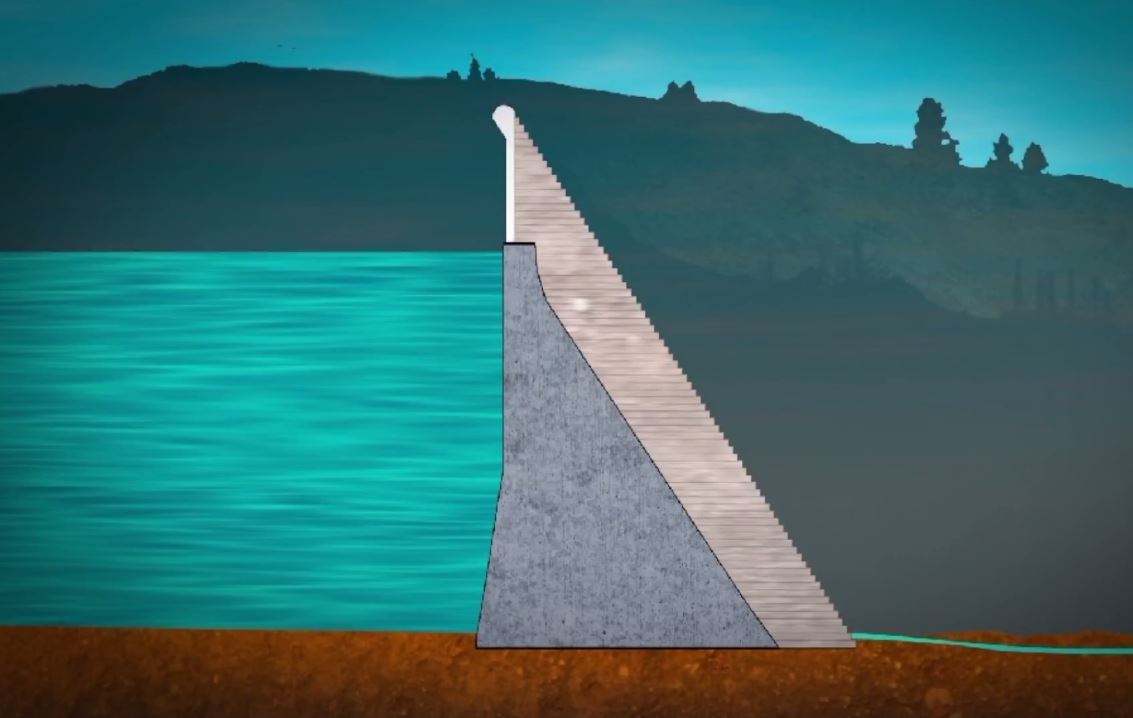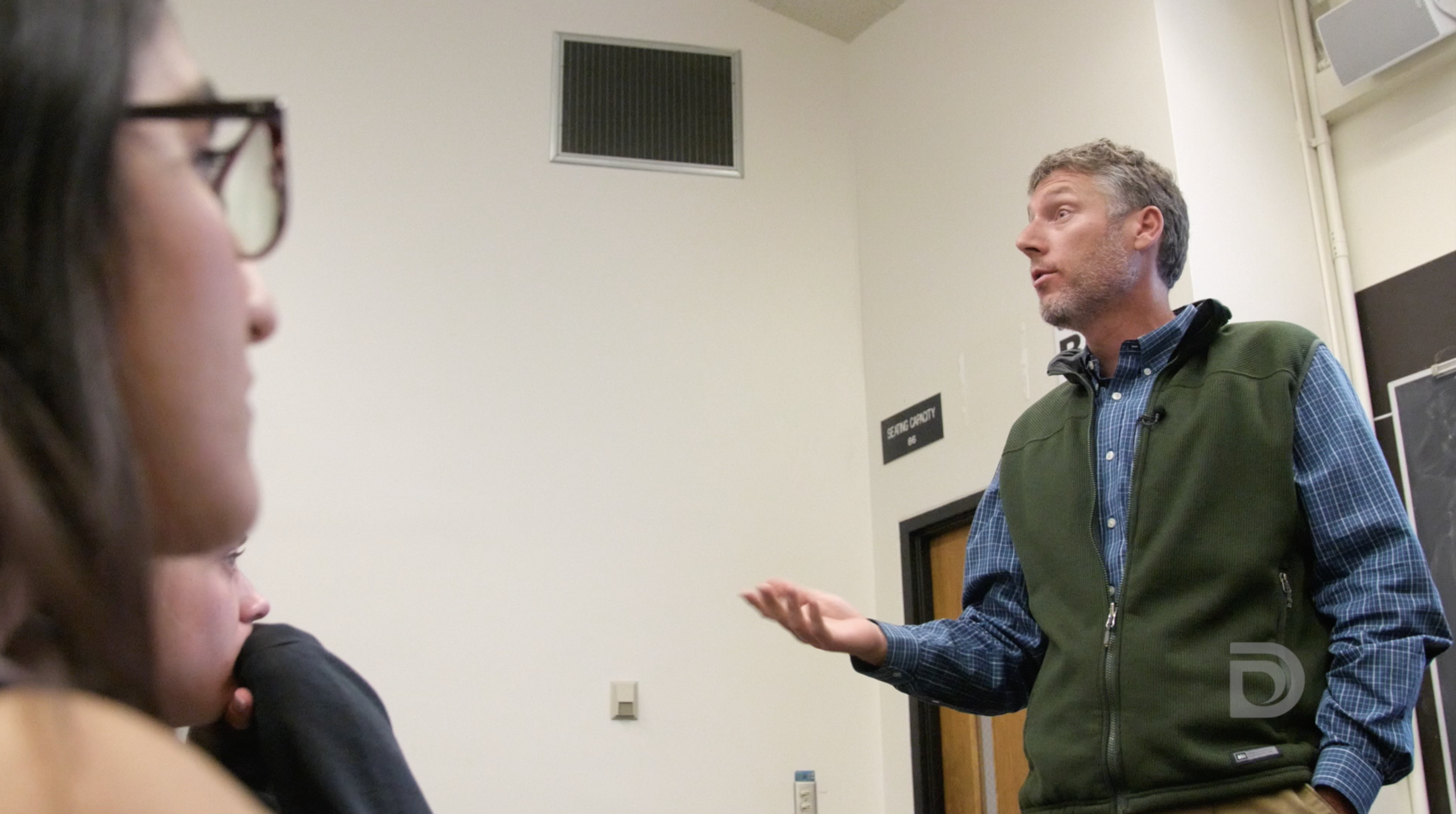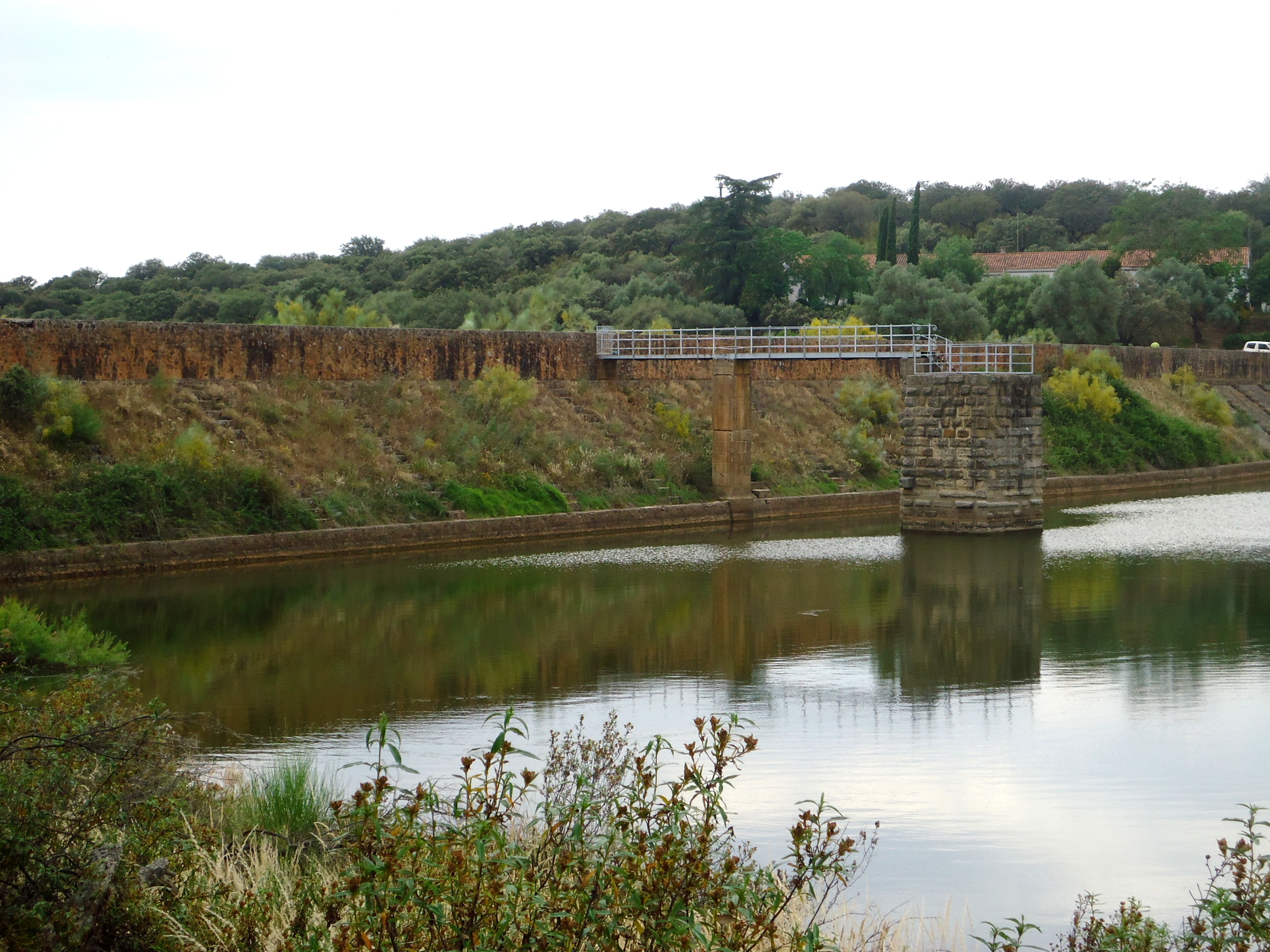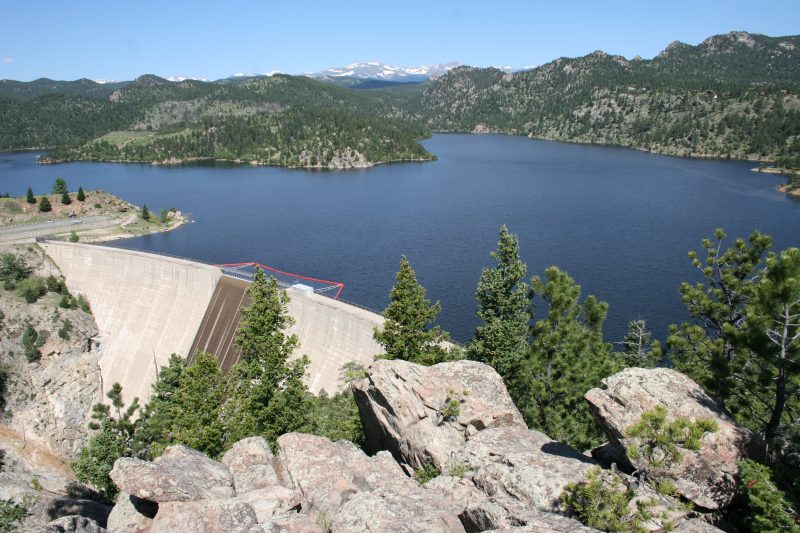
CU alum teaches next-gen civil engineers the wonder of dams
Jeff Martin lights up when he talks about dams — especially when he’s talking to engineering students at the University of Colorado Boulder.
“As civil engineers, you’re going to be building the roads, buildings, water and waste water plants that provide the building blocks of society,” Martin told two classes of engineering students as a guest lecturer during CU’s 2018 fall semester.
Martin has ties to Boulder. He graduated from CU Boulder in 1999 with a civil engineering degree. He met his wife while kayaking on Boulder Creek.
And, as the project manager for Denver Water’s $464 million Gross Reservoir Expansion Project, he’s leading the organization’s plans to raise Gross Dam by 131 feet — just 12 miles southwest of the Boulder campus.
The higher dam will expand the capacity of Gross Reservoir by 77,000 acre-feet and bolster Denver Water’s ability to store water on the north side of its system. The additional storage will help ensure the system is flexible enough to collect water for the 1.4 million people Denver Water serves as weather patterns grow increasingly uncertain due to climate change.
The project calls for adding 900,000 cubic feet of concrete to the existing structure and building the first roller-compacted, concrete, arched dam in the United States. When complete, the Gross Dam will be the tallest in Colorado and the 13th-tallest concrete dam in the U.S.
The expansion project, which is awaiting final permits, comes on the heels of years of cooperation and collaboration between Denver Water, local officials and environmental groups on both sides of the Continental Divide to do significant projects aimed at mitigating the environmental impacts of the enlarged reservoir.
“When you put together a project like this it comes with responsibility. And we have responsibilities not only to the 1.4 million people who drink our water but beyond them too. This project is a collaborative effort that’s built on agreements reached through negotiations over the last 15 years,” Martin said.
Among the collaborative environmental enhancement projects is the improvement of a section of the Fraser River in Grand County for fish habitat, which was opened to the public for fishing in 2018. The expansion project also allows the cities of Boulder and Lafayette to store 5,000 acre-feet of their water to use to improve habitat in and along South Boulder Creek below the dam.
The Colorado Department of Public Health and Environment studied the impacts of the dam’s expansion and found it will have a “net environmental benefit” to water quality in Colorado.
“This is a unique project in the U.S., a once-in-a-lifetime opportunity to work on a world-class project, and it’s going to be happening right in your backyard,” Martin told the students.
Martin returned to CU Boulder at the invitation of civil engineering Professor Angela Bielefeldt to talk to students in the College of Engineering & Applied Science in 2017 and 2018.
“I want to give back what I’ve learned over my 20-year career, and inspire,” he explained.
“Engineering is about using science to create solutions for the benefit of mankind. And many of the first civil engineering projects were dams, to capture water for drinking, or for irrigating crops, or to prevent a flood from wiping out the village.”
In the lecture hall, Martin points to a slide with the image of Cornalvo Dam in Spain, an earthen dam built during the first century by the Roman Empire and still in operation today, nearly 2,000 years later, providing drinking water to the city now known as Mérida.
“And what we build will survive beyond our lifetimes,” he tells the students.
Bielefeldt said she brings speakers into her classes to teach the students about issues they might encounter after they graduate.
“Jeff came to talk to my introduction to civil engineering class in 2017 and I was really happy that he wanted to come back,” she said.
While the classes focus on the principles of engineering, Bielefeldt said the speakers bring a far wider perspective of the issues — including ethics, sustainability and resiliency — that surround big projects.
“They are out there in the world and working on real projects,” said Alexi Iainis, a senior engineering student, after Martin’s talk.
“It’s interesting that it’s not all just simple calculation and design. There are a lot of things that go around a project that aren’t specifically engineering but are still important.”
While the era of building big dams is considered to be over, today’s students will be needed to work on these critical pieces of infrastructure in the future, Martin said.
In the past, dams were designed to serve their initial purpose for 50 or 100 years. But since new dams are exceedingly difficult to get permitted, today’s students will be needed to keep existing dams healthy, intact and operational, Martin said.
“These students are going to take care of our existing dams, because we can’t manage droughts without them. We have to store the water we need to provide for our customers. The Gross Reservoir Expansion Project is one of the largest civil engineering projects in the country right now. But that’s just one dam, there are many across the country that are growing older,” Martin said.
“Today’s students, they’ll have to be environmentally and socially responsible and challenge our designers to ensure the dams last.”




